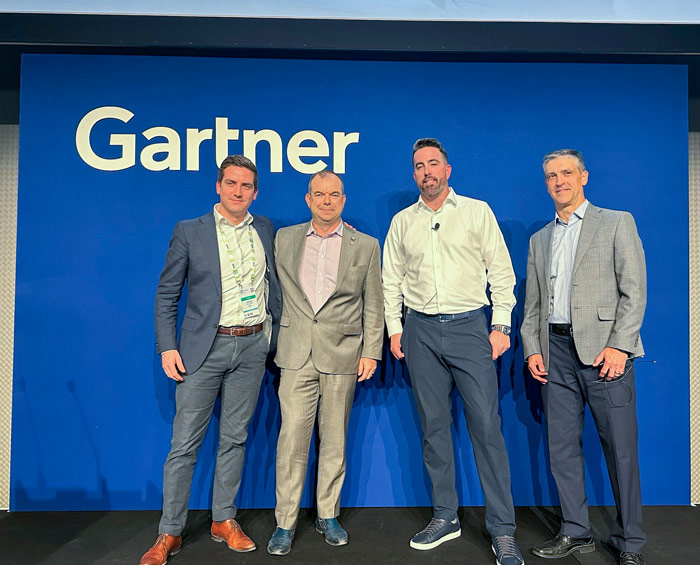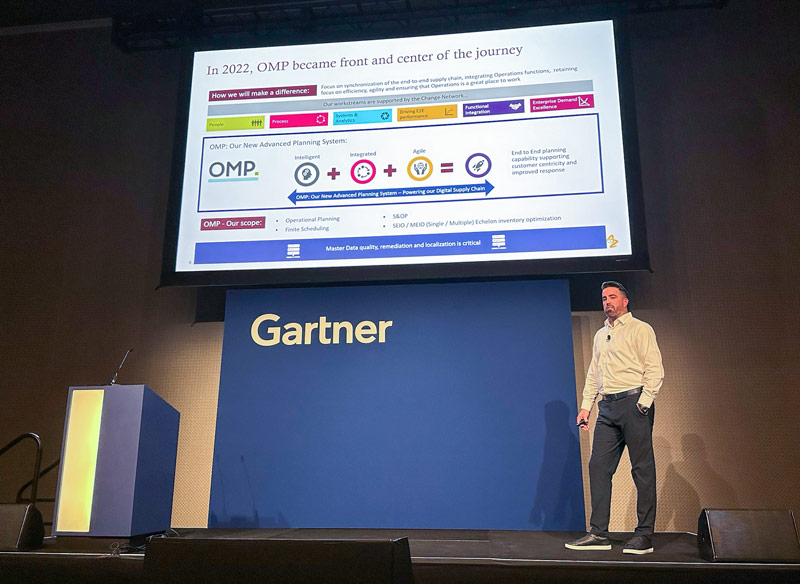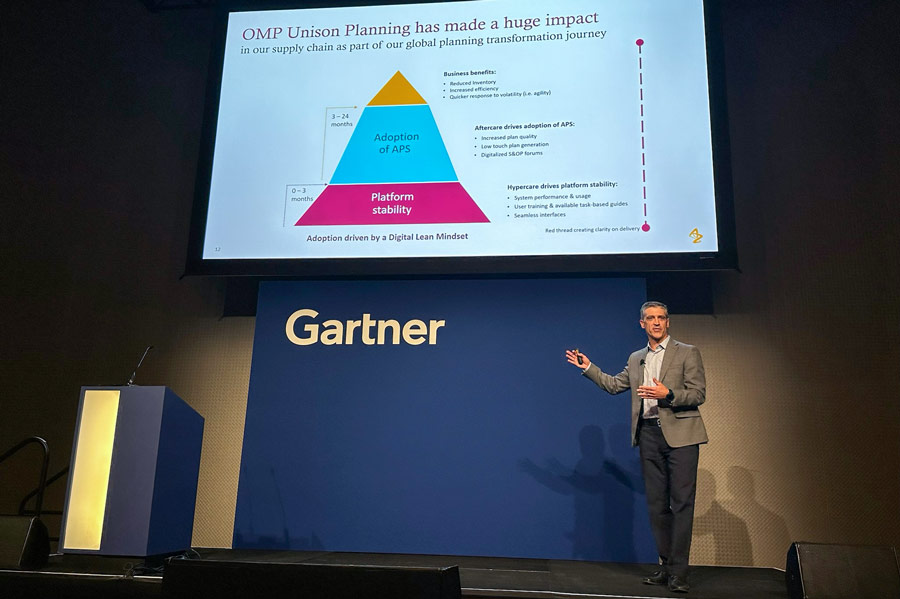
Key takeaways from the AstraZeneca presentation
December 3, 2024
AstraZeneca’s journey to decision-centric autonomous planning
Case study
At the 2024 Gartner Supply Chain Planning Summit in Denver, AstraZeneca’s Mark Trainor, Global Planning Transformation Technology Lead, and Pete Sanelli, Senior Director Technology Excellence, shared their transformation journey towards decision-centric autonomous planning. Their presentation highlighted how AstraZeneca is driving innovation, agility, and sustainability to meet increasing operational complexity and forward-thinking business goals.
Why transform?
AstraZeneca identified increasing complexity in its operations as a key challenge. The rise of biologics, small-volume/high-value products, and the need for cold storage added layers of logistical intricacy. This complexity, coupled with an ambitious goal to launch 20 new medicines, double in size, and become carbon negative by 2030, required an operational overhaul.

Case study
A shift in strategy
The Global Planning Transformation Program, initiated in 2020, marked a decisive shift. By replacing fragmented, Excel-based planning processes with a synchronized, end-to-end digital solution, AstraZeneca redefined its approach to supply chain planning. Key pillars of this transformation include:
- Technology integration: Advanced analytics and AI-based planning modules provide real-time insights.
- Process optimization: Scenario-based planning and closed-loop systems streamline decision-making.
- Empowering people: Cross-functional transparency, robust training, and a shift to exception-based planning empowers teams.
The role of technology in driving success
Case study

OMP’s advanced planning tools have been a key enabler of AstraZeneca’s supply chain transformation. These tools include:
- Advanced solvers: Ensuring optimal inventory levels while balancing manufacturing efficiency with demand, while also improving planner productivity.
- Scenario-based planning: Offering predictive insights into inventory, costs, and service outcomes for better decision-making.
These capabilities have contributed to measurable improvements, including lower inventory levels, enhanced responsiveness to disruptions, and streamlined operations. Additionally, the solution’s optimization features align with AstraZeneca’s sustainability goals by reducing logistical inefficiencies and excess production.
Case study
Embedding change across people, processes, and technology
AstraZeneca’s approach to digital transformation extends beyond adopting new tools, emphasizing the importance of fostering a cultural shift. Mark Trainor and Pete Sanelli highlighted key factors driving this change, starting with a strong foundation of accurate, localized data to ensure smooth operations and sustainability in planning. Transparent processes promote cross-functional collaboration, aligning teams across regions and departments. Additionally, extensive training programs and streamlined workflows help planners focus on strategic decision-making rather than repetitive tasks.
Embedding change across the organization
AstraZeneca’s approach goes beyond technology, focusing on people and processes to ensure long-term success. The speakers emphasized the importance of:
- Data integrity: High-quality, localized data as the foundation for effective planning.
- Cross-functional collaboration: Aligning teams across geographies through transparent and cohesive processes.
- Upskilling teams: Training planners to leverage digital tools for strategic decision-making and fostering a culture of innovation.
Case study
Continuous improvement as a strategy
The speakers outlined AstraZeneca’s approach to continuous improvement, emphasizing the importance of refining processes through regular feedback loops. They highlighted how integrating real-time updates and scenario-based decision-making ensures the supply chain remains agile and responsive. Additionally, they discussed the company’s shift toward autonomous planning, where system-generated recommendations guide operational execution with minimal manual intervention, streamlining processes and enhancing overall efficiency.

Case study
Key takeaways for industry leaders
AstraZeneca’s journey demonstrates the value of combining advanced technology, empowered teams, and sustainable practices to navigate operational complexity. Key lessons include:
- Digital transformation is a holistic process that requires alignment across people, processes, and systems, along with phased monitoring to assess platform usage, drive user adoption, and unlock its full potential.
- Early involvement of subject matter experts accelerates adoption and ensures the development of practical solutions.
- Focusing on innovation and continuous improvement drives long-term value both internally and externally.
Mark Trainor and Pete Sanelli’s presentation left attendees inspired by AstraZeneca’s vision for a synchronized, agile, and sustainable supply chain — a testament to what’s possible when technology and innovation converge.
Want to learn more?





